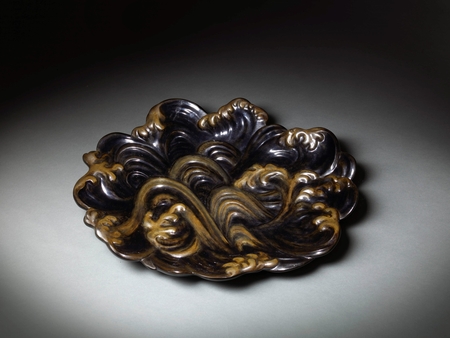Product Description
7514 A kanshitsu (dry lacquer) tray in the form of cresting waves
Japan 20th century Shōwa period
Dimensions: H. 4cm x W. 52.5cm x D. 42cm (1¾” x 20¾” x 16¾”)
Tomobako (original box) inscribed:
Lid: Nami bori kazari bon (Lacquered and carved tray)
Shisshō Hyōsaku zo (Made by Hyōsaku master craftsman in lacquer)
Seal: Hyōsaku.
Seal on wrapping cloth: Kyoto, Hon kataji nurimono, makie chosei sho, Suzuki Hyōsaku (Hon kataji* lacquered item, Suzuki Hyōsaku, lacquer studio, Kyoto)
*Hon kataji is the most commonly used type of surface preparation of today. It can consist of as many as thirty six steps, including such processes as filling in and preparing the base, applying cloth, applying the separate layers of lacquer and polishing.
Suzuki Hyōsaku II (1905-1991) was born in Kyoto with the given name of Teiji. He learned lacquering techniques under his father Suzuki Hyōsaku I (1874-1943).
Hyōsaku II launched his creative career in 1926 at the age of 21 winning a prize for his work at the Shotoku Taishi Competitions. In 1934, he exhibited at the Ryukeiha Crafts Exhibition, producing up to the minute contemporary work. He later exhibited a lacquered mirrored cosmetic stand at the Great Paris Exposition and won a silver prize.
In 1978 at the age of 73, he exhibited at the Exhibition of Modern Craftsmen and in the same year a solo commemorative exhibition titled Fifty Years Working with Lacquer was held at the Takashimaya Department Store, Kyoto.
Works by the artist can be found in the collections of: Kyoto Municipal Museum of Art





